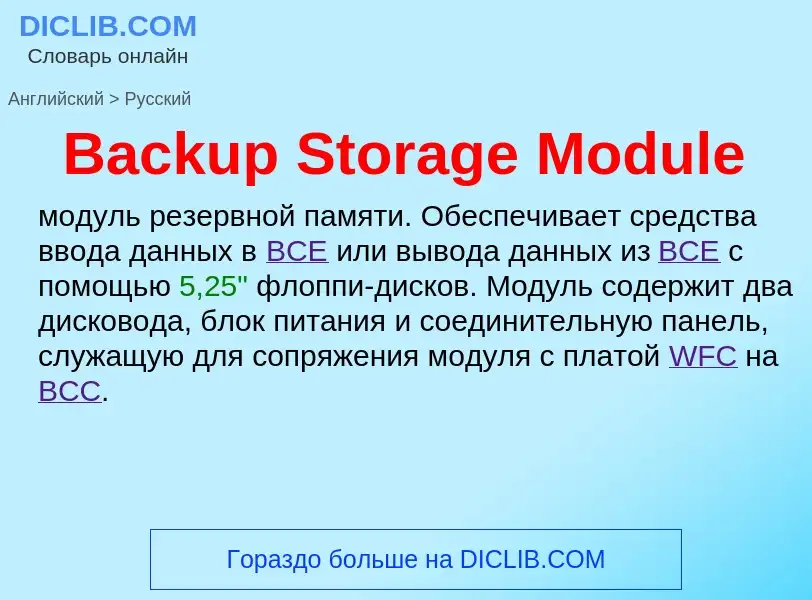Tradução e análise de palavras por inteligência artificial ChatGPT
Nesta página você pode obter uma análise detalhada de uma palavra ou frase, produzida usando a melhor tecnologia de inteligência artificial até o momento:
- como a palavra é usada
- frequência de uso
- é usado com mais frequência na fala oral ou escrita
- opções de tradução de palavras
- exemplos de uso (várias frases com tradução)
- etimologia
Backup Storage Module - tradução para russo
общая лексика
устройство (накопитель) для архивации, резервного копирования
нефтегазовая промышленность
резервное устройство
устройство в состоянии нагруженного резерва
Definição
Wikipédia
Storage Module Drive (SMD) is a family of storage devices (hard disk drives) that were first shipped by Control Data Corporation in December 1973 as the CDC 9760 40 MB (unformatted) storage module disk drive. The CDC 9762 80 MB variant was announced in June 1974 and the CDC 9764 150 MB and the CDC 9766 300 MB variants were announced in 1975 (all capacities unformatted). A non-removable media variant family of 12, 24 and 48 MB capacity, the MMD, was then announced in 1976. This family's interface, SMD, derived from the earlier Digital RP0x interface, was documented as ANSI Standard X3.91M - 1982, Storage Module Interfaces with Extensions for Enhanced Storage Module Interfaces.
The SMD interface is based upon a definition of two flat interface cables ("A" control and "B" data) which run from the disk drive to a controller and then to a computer. This interface allows data to be transferred at 9.6 Mbit/s. The SMD interface was supported by many 8 inch and 14 inch removable and non-removable disk drives. It was mainly implemented on disk drives used with mainframes and minicomputers and was later itself replaced by SCSI.
Control Data shipped its 100,000th SMD drive in July 1981. By 1983 at least 25 manufacturers had supplied SMD drives, including, Ampex, Century Data Systems, CDC, Fujitsu, Hitachi, Micropolis, Pertec, Priam, NEC and Toshiba.

![From left to right, a [[DVD]] disc in plastic cover, a USB flash drive and an [[external hard drive]] From left to right, a [[DVD]] disc in plastic cover, a USB flash drive and an [[external hard drive]]](https://commons.wikimedia.org/wiki/Special:FilePath/DVD, USB flash drive and external hard drive.jpg?width=200)
